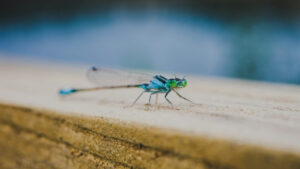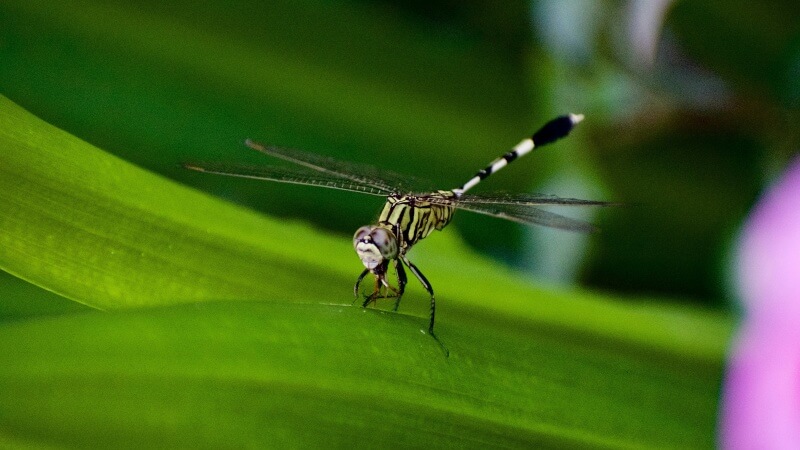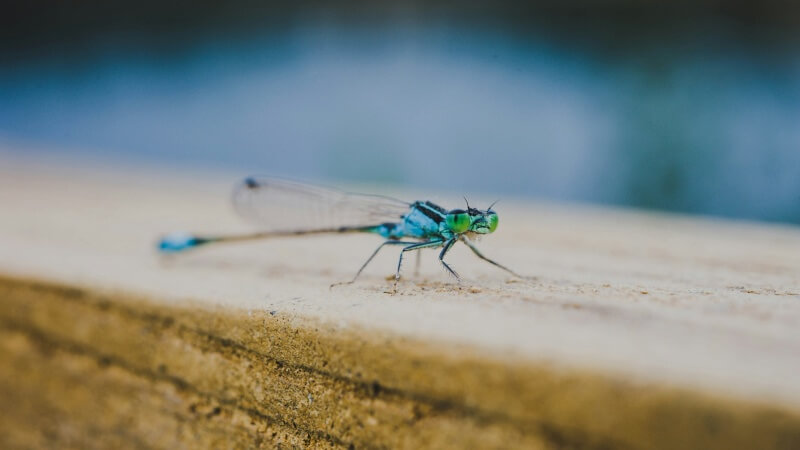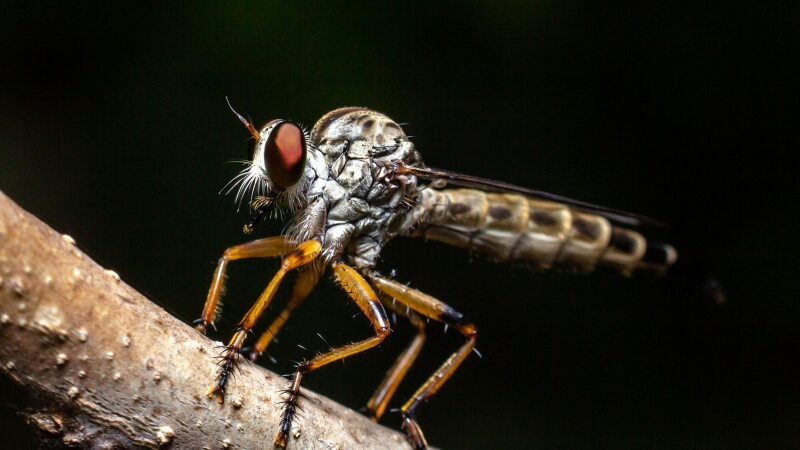
How To Design A Waterproof Mosquito Light
There’s something almost magical about a mosquito light—a beacon in the night that promises to shield us from the irksome buzz and bites of mosquitoes.

Malaria, dengue fever, Zika virus, and West Nile virus are just a few of the illnesses that are spread by mosquitoes. By biting people, they spread disease-causing germs, posing serious health hazards.
The implementation of successful prevention and control strategies to protect public health globally depends on an understanding of this link.
For a number of reasons, it is crucial to comprehend the health concerns posed by mosquitoes. It makes it possible for people to adopt the proper preventative measures, slows the spread of illnesses, and lessens the burden on impacted areas.
People are better able to make decisions when they are aware of these hazards, which promotes a safer and healthier environment for everybody.
Mosquito-borne diseases have a significant global impact.
Malaria, with its global impact, is a mosquito-borne disease characterized by symptoms such as fever, fatigue, and anemia, while severe cases can lead to organ failure and death; it predominantly affects populations in tropical and subtropical regions, posing a significant health burden on vulnerable communities worldwide.
Malaria presents a range of symptoms, including high fever, chills, headaches, and muscle aches, often accompanied by nausea and fatigue. If left untreated or mismanaged, the disease can lead to severe complications such as organ damage, cerebral malaria, anemia, and even death, emphasizing the critical need for early diagnosis and prompt treatment.
Malaria exhibits a wide geographic distribution, primarily prevalent in regions with tropical and subtropical climates. Sub-Saharan Africa bears the highest burden, with vulnerable populations including children, pregnant women, and individuals with compromised immune systems.
However, parts of Asia, Latin America, and the Middle East also experience varying degrees of malaria transmission, necessitating targeted interventions for affected populations worldwide.
Dengue Fever, a growing public health concern, is primarily transmitted through the bite of infected Aedes mosquitoes and manifests with symptoms such as high fever, severe headaches, joint and muscle pain, and rash; prevention and control strategies involve eliminating mosquito breeding sites, using protective clothing, and implementing vector control measures to curb the spread of the disease.
Dengue Fever spreads through the bite of Aedes mosquitoes, particularly Aedes aegypti. The virus enters the bloodstream, leading to symptoms such as high fever, severe headaches, joint and muscle pain, fatigue, rash, and in severe cases, bleeding and organ damage. Early detection and prompt medical care are crucial to managing the disease effectively.
Preventing and controlling Dengue Fever involves various strategies. Eliminating stagnant water sources, where mosquitoes breed, plays a pivotal role.
Community awareness campaigns promote the use of insect repellents, wearing protective clothing, and using bed nets. Additionally, mosquito control measures like larvicide treatments and targeted spraying help curb the mosquito population and minimize disease transmission.
The recent outbreak of the Zika Virus has raised concerns due to its transmission through mosquito bites, primarily by Aedes mosquitoes, affecting regions with tropical and subtropical climates; the virus carries potential complications, including microcephaly and other neurological disorders, emphasizing the urgency for heightened surveillance and prevention measures.
The Zika Virus spreads through various transmission modes, primarily through the bite of infected Aedes mosquitoes, but it can also be transmitted through sexual contact and vertical transmission from mother to fetus during pregnancy. Affected regions include tropical and subtropical areas worldwide, with increased attention on areas with ongoing Zika outbreaks and high mosquito activity.
The Zika Virus is associated with potential complications, notably microcephaly, a condition characterized by an abnormally small head and underdeveloped brain in newborns. Other neurological disorders, such as Guillain-Barré syndrome, have also been linked to Zika infection.
These complications underscore the importance of prevention, particularly for pregnant women, and continued research to understand long-term effects.
The West Nile Virus has been increasingly observed in new regions, with transmission occurring primarily through the bites of infected mosquitoes, notably Culex species. The virus can cause symptoms ranging from mild flu-like illness to severe neurological complications.
Risk factors include mosquito exposure and weakened immune systems, emphasizing the importance of preventive measures such as mosquito control, wearing protective clothing, and using insect repellents.
The West Nile Virus is primarily transmitted through the bites of infected mosquitoes, particularly those belonging to the Culex species. The virus can cause a range of symptoms, from mild flu-like illness with fever, headache, and body aches, to severe complications including encephalitis and meningitis.
Early detection and medical care are crucial for managing the disease effectively.
Exposure to mosquito bites, particularly in regions where the West Nile Virus is actively transmitted, and those with compromised immune systems or underlying medical disorders are risk factors for infection.
To lower the risk of mosquito bites and subsequent infection, preventive techniques include applying insect repellents, donning protective clothes, removing breeding grounds near standing water, and installing window screens.
Lesser-known mosquito-borne diseases demand attention. Chikungunya, a painful fever, is transmitted by Aedes mosquitoes and causes severe joint pain and swelling.
Yellow Fever, a deadly viral infection transmitted by Aedes and Haemagogus mosquitoes, can result in jaundice, organ failure, and hemorrhage. Japanese Encephalitis poses risks in Asia, causing inflammation of the brain, with mosquitoes transmitting the virus predominantly in rural agricultural regions.
Chikungunya, a significant concern, is transmitted by Aedes mosquitoes, with symptoms including high fever, debilitating joint pain, muscle aches, rash, and fatigue; recent outbreaks have occurred in regions such as Asia, the Americas, and the Indian Ocean islands, highlighting the need for awareness, effective mosquito control measures, and prompt medical attention for affected individuals.
Chikungunya is primarily transmitted through the bites of infected Aedes mosquitoes, particularly Aedes aegypti and Aedes albopictus. The virus causes symptoms such as high fever, severe joint pain (arthralgia), muscle aches, headache, rash, and fatigue.
The debilitating joint pain is often the most distinctive and long-lasting symptom, making it crucial to prevent mosquito bites and seek medical care for proper management.
Recent outbreaks of Chikungunya have been documented in several locations, demonstrating the disease’s broad global dispersion. Parts of Asia, the Americas, the islands in the Indian Ocean, and even Europe have been impacted by the virus.
To battle the disease and lessen its effects in afflicted regions, comprehensive and quick mosquito control measures are required, as well as greater awareness and observation.
Yellow Fever, a deadly viral infection, is primarily transmitted through the bites of infected Aedes and Haemagogus mosquitoes, with affected regions predominantly found in tropical areas of Africa and South America; vaccination is the most effective preventive measure against the disease, emphasizing the importance of immunization for travelers to at-risk regions.
Aedes and Haemagogus mosquitoes, which act as the virus’s vectors, bite victims to spread Yellow Fever. Tropical parts of Africa and South America are affected by the illness, and there are sporadic outbreaks there.
For the implementation of suitable preventative measures and vaccination programs, it is essential to understand the cycle of transmission and the regions at risk.
Immunization is essential for avoiding Yellow Fever. The vaccination against yellow fever is quite effective and gives protection that lasts a lifetime.
It is advised for persons going to or living in endemic areas, as well as for those who live in locations where outbreaks are possible. To lower the risk of illness, further preventative actions include using insect repellents, donning protective clothes, and avoiding mosquito bites.
Japanese Encephalitis poses significant risks in Asia, with transmission occurring through the bites of infected Culex mosquitoes, leading to potentially severe neurological complications; vaccination campaigns and mosquito control efforts are crucial in reducing the incidence of this viral infection and protecting at-risk populations.
Japanese Encephalitis is transmitted primarily through the bites of infected Culex mosquitoes, particularly in rural agricultural regions of Asia; the virus can cause severe neurological complications, including inflammation of the brain (encephalitis), leading to symptoms such as high fever, headache, stiff neck, seizures, and even coma, highlighting the importance of prevention and prompt medical attention.
Japanese Encephalitis vaccination is an essential preventative intervention, especially for people who live in or travel to endemic areas. Effective defense against the virus is offered by vaccination. Additionally, limiting mosquito breeding grounds and employing pesticides are important mosquito control measures that help to reduce the risk of transmission and stop the development of the illness.
Mosquito-borne illnesses have a significant worldwide impact and place a heavy strain on society and the economy. Healthcare, treatment, lost productivity, and preventative measures all have significant expenses attached to them.
Through awareness campaigns, research, immunization programs, and efficient vector control techniques, public health organizations and initiatives play a critical role in the surveillance, prevention, and control of these illnesses.
Mosquito-borne diseases impose a significant economic and societal burden worldwide. The costs incurred for healthcare services, treatment, hospitalization, and loss of productivity are substantial.
These diseases hinder economic development in affected regions, strain healthcare systems, and have a detrimental impact on individuals, families, and communities, highlighting the urgent need for prevention and control measures.
In the fight against illnesses spread by mosquitoes, public health organizations and programs are crucial. They support prevention efforts by fostering awareness, early identification, and reporting of instances as well as surveillance.
To execute efficient strategies, policies, and interventions that aim to lessen the impact of these illnesses on public health, these organizations work in collaboration with healthcare professionals, research institutions, and communities.
Vector control strategies, such as insecticide use, face challenges related to the emergence of insecticide resistance in mosquitoes, underscoring the need for innovative approaches; environmental methods, like source reduction and biological control, along with community involvement in promoting sanitation and eliminating breeding sites, are essential components for effective and sustainable mosquito control.
Insecticide use is a key component of vector control strategies against mosquitoes, but concerns arise due to the emergence of insecticide resistance in mosquito populations; this resistance undermines the effectiveness of certain insecticides, necessitating the development and implementation of integrated pest management approaches and alternative control methods to overcome this challenge and maintain effective mosquito control.
Environmental approaches, such as source reduction and biological control, offer sustainable solutions for mosquito control by targeting breeding sites and interrupting the mosquito life cycle.
Community involvement plays a crucial role in implementing these approaches, including promoting proper sanitation, eliminating stagnant water sources, and raising awareness about personal protection measures, fostering a collective effort in mosquito control and prevention.
Personal protection and prevention are essential in reducing the risk of mosquito-borne diseases. Mosquito repellents, particularly those containing DEET or picaridin, are effective in repelling mosquitoes.
Wearing protective clothing, such as long sleeves and pants, and using bed nets provide an additional barrier against mosquito bites. Mosquito-proofing homes by installing window screens and eliminating entry points further reduce exposure.
Travelers to mosquito-prone areas should seek advice on vaccinations and preventive measures from healthcare professionals.
Mosquito repellents are a vital tool in personal protection against mosquito-borne diseases. Repellents containing DEET, picaridin, or other approved ingredients are effective in deterring mosquitoes.
Applying repellents to exposed skin and clothing can significantly reduce mosquito bites, providing a crucial layer of defense and minimizing the risk of disease transmission.
Protective clothing plays a crucial role in minimizing mosquito bites. Wearing long-sleeved shirts, long pants, and socks can provide physical barriers against mosquito contact.
Additionally, mosquito-proofing homes by installing window screens, sealing gaps, and using bed nets create a protective environment, reducing the entry of mosquitoes and ensuring a safer living space.
When traveling to areas prone to mosquito-borne diseases, it is essential to seek travel advice from healthcare professionals or travel clinics. They can provide information on specific risks, recommended vaccinations, and preventive measures.
Following their guidance, such as using mosquito repellents, wearing protective clothing, and staying in accommodations with proper mosquito control, helps ensure a safer travel experience.
In conclusion, understanding the health risks associated with mosquitoes and the diseases they transmit is of utmost importance. Mosquito-borne diseases have a significant global impact, causing immense economic and societal burdens.
However, through comprehensive knowledge, effective prevention strategies, and collaboration among public health agencies, communities, and individuals, we can mitigate the risks, protect ourselves, and work toward a world with a reduced mosquito-borne disease burden. Vigilance, education, and proactive measures remain key in combating these diseases and safeguarding public health.


There’s something almost magical about a mosquito light—a beacon in the night that promises to shield us from the irksome buzz and bites of mosquitoes.

Within the first few moments of considering a mosquito light, the idea transforms from a mere concept into a beacon of hope against the nightly

The moment you switch on a mosquito light, you declare war on those pesky insects. But what if I told you that you could turbocharge

Imagine this scenario: as the hues of twilight blend into the evening sky, your mosquito light buzzes to life, standing guard against the night’s swarm

There’s something almost magical about a mosquito light—a beacon in the night that promises to shield us from the irksome buzz and bites of mosquitoes.

Within the first few moments of considering a mosquito light, the idea transforms from a mere concept into a beacon of hope against the nightly

The moment you switch on a mosquito light, you declare war on those pesky insects. But what if I told you that you could turbocharge

Imagine this scenario: as the hues of twilight blend into the evening sky, your mosquito light buzzes to life, standing guard against the night’s swarm
Copyright © 2025 mosquitokillerlight. All Rights Reserved.